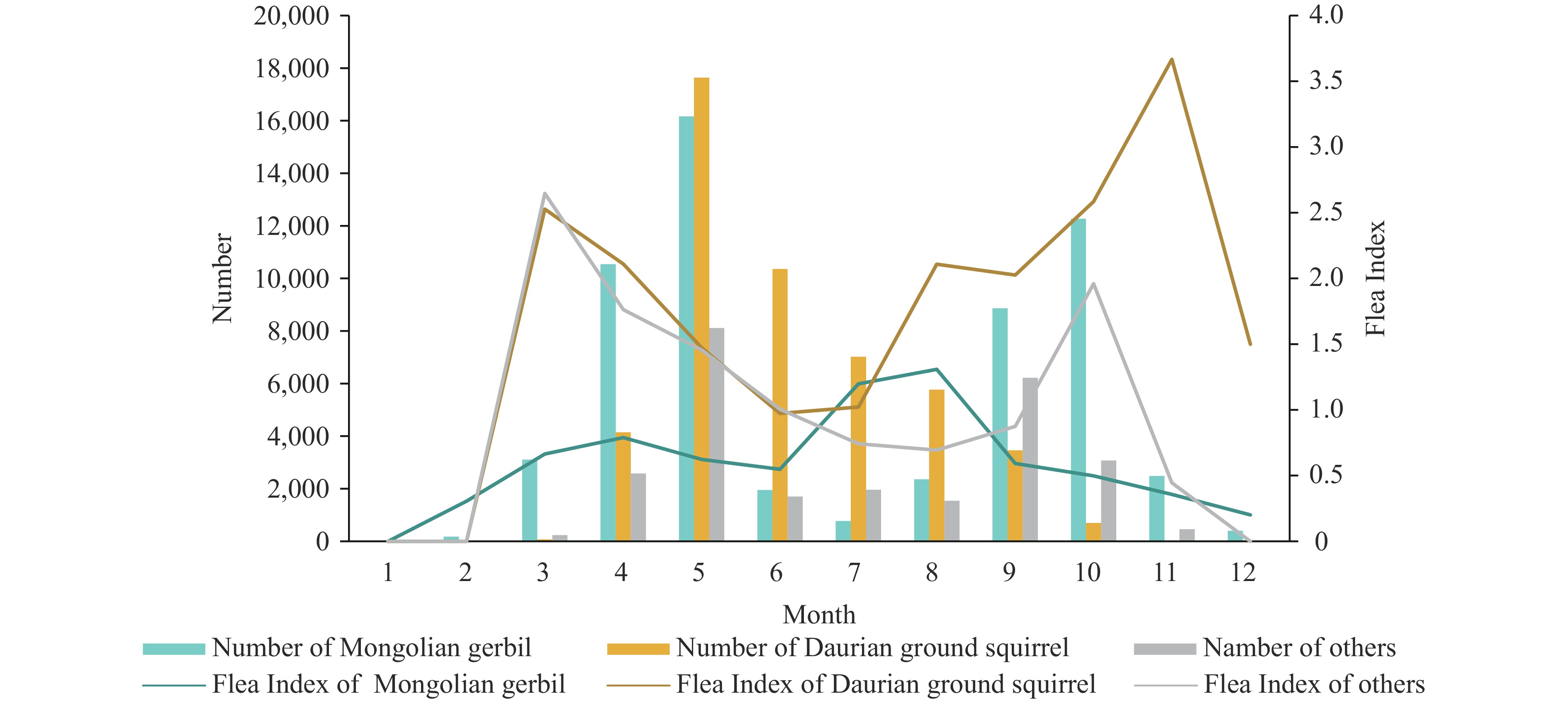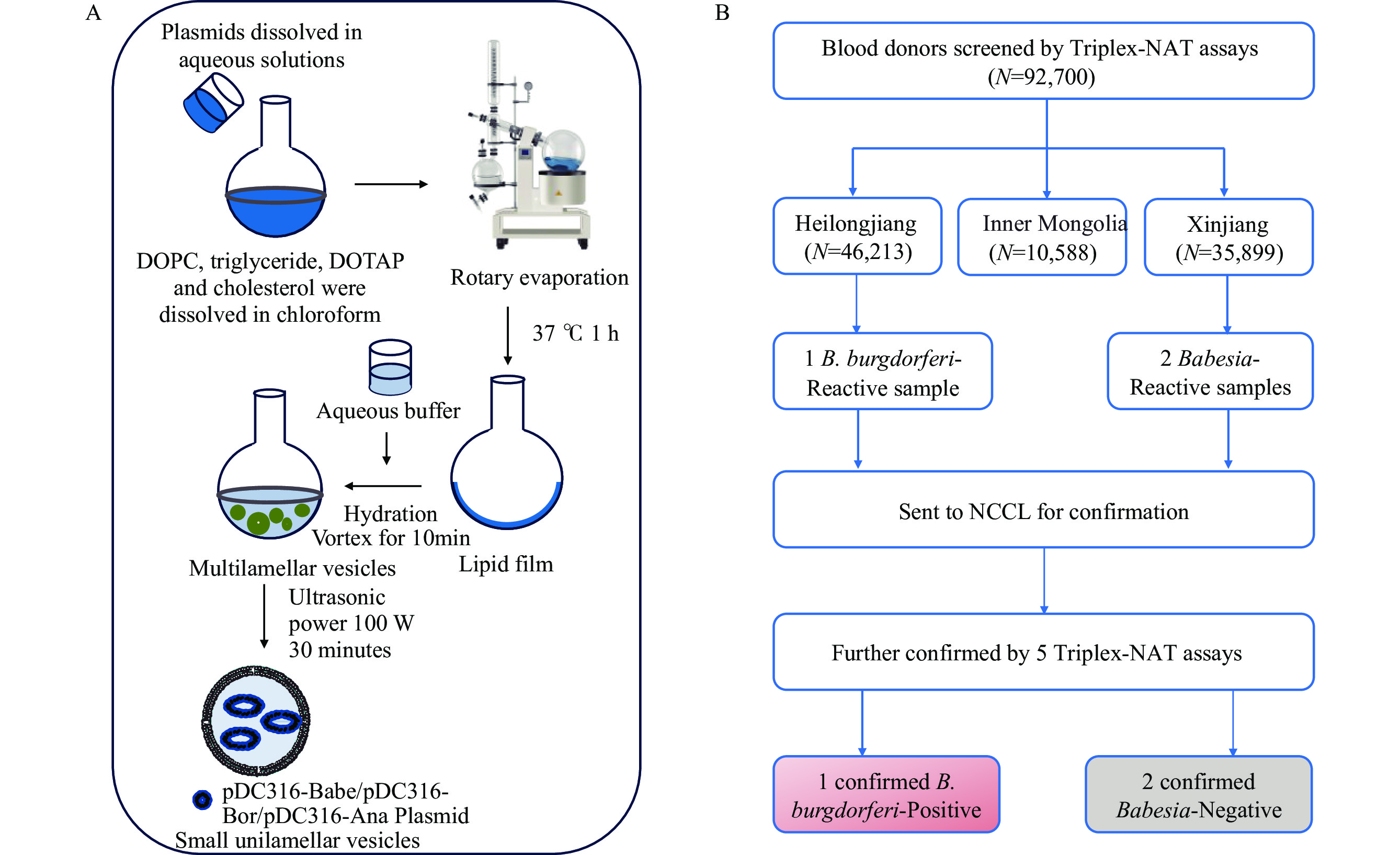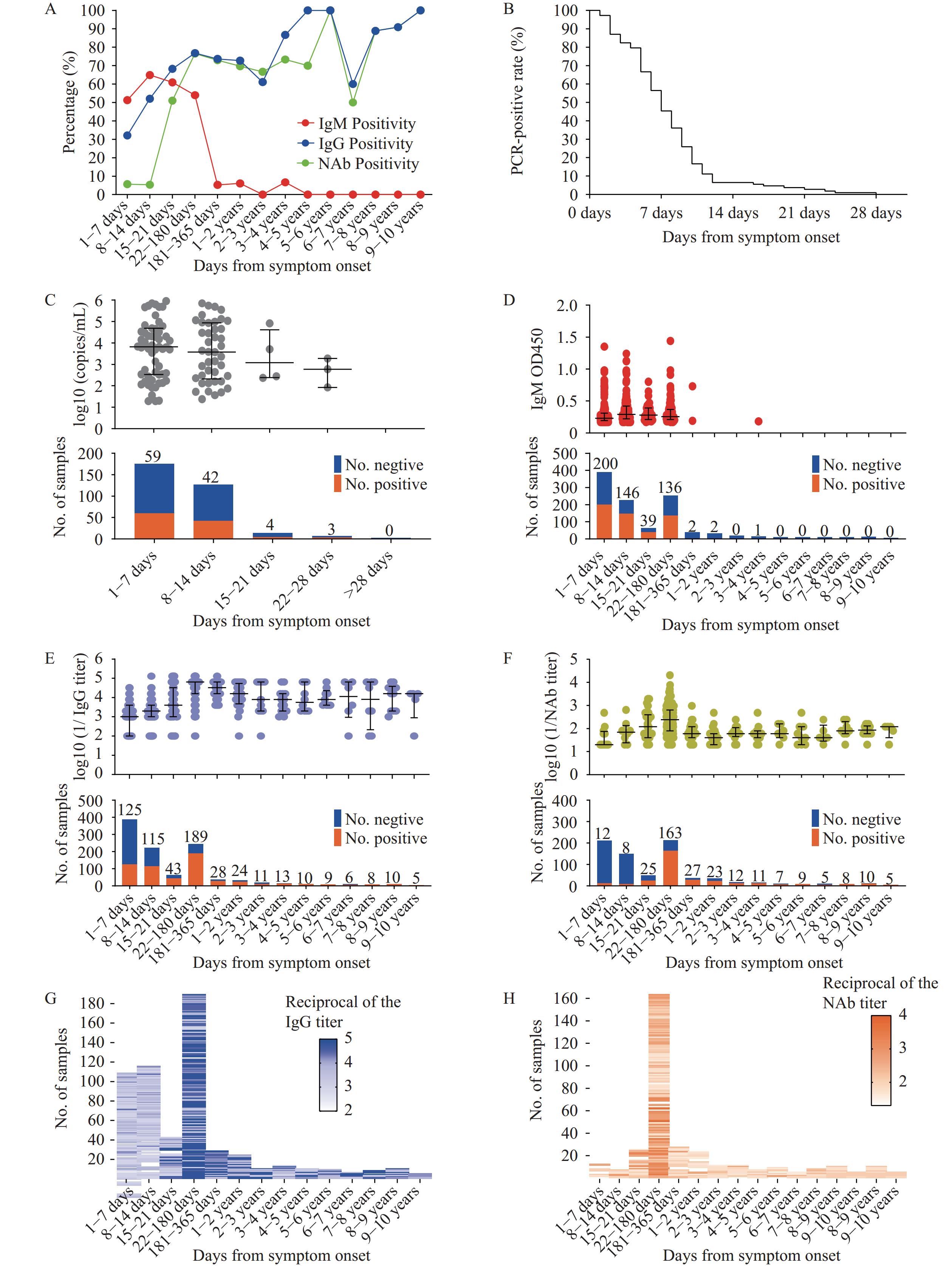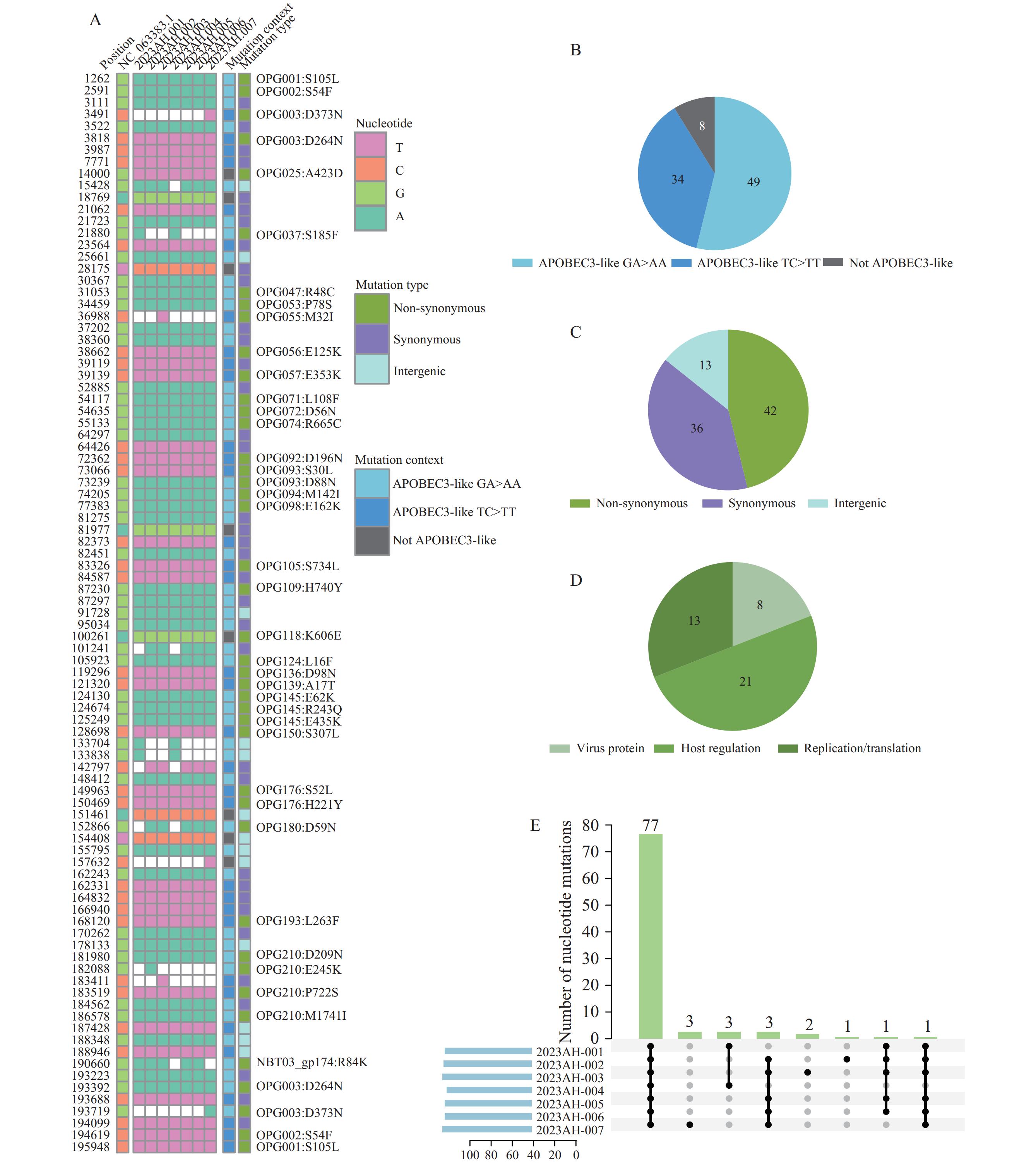2024 Vol. 6, No. 46
Recent plague cases in Inner Mongolia prompted research on rodents and fleas. This study aimed to describe the spatiotemporal characteristics of parasitic fleas on predominant rodent species and identify plague risk areas.
We assembled monitoring data from the National Plague Surveillance System for 12 regions in Inner Mongolia from 2013 to 2021. We performed descriptive statistics using relative indices, analyzed interannual flea index trends using the Mann-Kendall test, compared spatiotemporal characteristics using the Kruskal-Wallis H test and Dunn’s test, and delineated plague risk areas based on cluster analysis.
In total, 134,181 rodents from 28 species were captured, with an average parasitism rate of 31.46%. A total of 143,958 fleas were collected, resulting in a total average flea index of 1.07. The primary rodent species were the Mongolian gerbil (Meriones unguiculatus) and Daurian ground squirrel (Spermophilus dauricus). The flea index showed a decreasing trend (Sen’s slope=−0.06, P<0.05). Meriones unguiculatus had two peaks (May and October), with a delay of one to two months after peak flea parasitism. Spermophilus dauricus had a peak in May but two flea parasitism peaks (March and November). Meriones unguiculatus and Spermophilus dauricus flea indices varied significantly across regions (H=25.75, P<0.001; H=29.88, P<0.001). Erdos City and Xilingol League had the highest flea indices for each species, respectively. Cluster analysis divided the 12 regions into three risk zones.
The two predominant rodent species in Inner Mongolia have demonstrated an overall decline in flea index over time. The hotspots for flea index are primarily concentrated in Erdos and Xilingol League. Strengthening regional cooperation is crucial for tailored plague prevention and control measures.
Visceral leishmaniasis (VL), transmitted by sandflies, is a zoonotic disease of public health importance in central and western China.
A number of VL hotspots were identified in the border areas of Shanxi-Hebei, Shanxi-Shaanxi, Gansu-Sichuan, as well as the southern Xinjiang provincial-level administrative division (PLAD). Mountain zoonotic visceral leishmaniasis (MT-ZVL) expanded rapidly in the mountainous regions of Shaanxi, Shanxi, Henan, Hebei, Beijing, and Gansu PLADs from 2011 to 2022. A notable resurgence of MT-ZVL has occurred, with 671 cases in 66 historically endemic counties.
Actions are recommended to restrain the rapid expansion of MT-ZVL: Firstly, implement One Health approaches, such as timely diagnosis and treatment of patients, promoting insecticide-impregnated dog collars, and restraining the number of dogs in endemic areas. Secondly, surveillance-response systems for sandflies and infective dogs in potential risk areas should be strengthened.
Recently, tick-borne pathogens transmitted through blood transfusions have posed new risks to blood safety.
We developed a quality control system for nucleic acid testing (NAT) for Babesia, Borrelia burgdorferi, and Anaplasma phagocytophilum, evaluated five Triplex-NAT kits, and conducted external quality assessments of blood centers. This study screened 92,700 blood donors from Heilongjiang, Inner Mongolia, and Xinjiang provincial-level administrative divisions during 2022–2023. A donor in Hegang, Heilongjiang, tested positive for Borrelia burgdorferi, marking the first detection of this infection in Chinese blood donors.
Quality control of NAT is vital for managing tick-borne pathogen outbreaks. To ensure blood transfusion safety, screening should be strengthened in high-risk areas outside national borders.
Severe fever with thrombocytopenia syndrome (SFTS) is a serious tick-borne disease in East Asia with high mortality, particularly affecting the elderly. Since its discovery in 2010, inconsistencies in small-scale studies and the lack of decade-long research on antibody levels in large population samples after natural infection, along with the absence of an effective vaccine, highlight the need for large-scale, long-term data in high-incidence regions of China.
This study of 1,410 serum samples from SFTS patients in high-incidence regions of China reveals that immunoglobulin M (IgM) levels peak at 8–14 days post-infection, declining to nearly undetectable levels by 180 days. Immunoglobulin G (IgG) and neutralizing antibodies (NAb) levels peak at 22–180 days, persisting up to 10 years. IgM levels correlate with viral load and various immune and coagulation parameters, with lower levels observed in fatal cases. During convalescence, elderly patients have lower IgG levels, whereas females exhibit higher IgG levels compared with males.
The study’s findings on long-term antibody dynamics in SFTS patients can significantly improve vaccine development, optimize therapy scheduling, inform public health policies, and enhance diagnostic tools, leading to better disease management and prevention in high-incidence areas.
Monkeypox, first identified in Africa in 1958, is a zoonotic disease caused by monkeypox virus (MPXV). Since January 2022, a global outbreak of mpox has spread to over 100 non-endemic countries. As of June 30, 2024, there have been 99,176 confirmed cases and 535 probable cases across 116 countries, resulting in 208 deaths.
This report presents an analysis of the whole genome sequences of seven MPXVs from Anhui Province. We discovered that, compared to the reference sequence (NC_063383.1), these genomes exhibit 91 nucleotide substitutions and 42 amino acid mutations. They are highly similar to genomes of MPXVs that emerged simultaneously in China, Japan, the Republic of Korea, and Portugal, and are classified within the IIb C.1.1 lineage, with multiple transmission chains and no new branch.
The MPXV in Anhui Province has undergone mutations in areas critical for viral replication, transcription, and immune escape, posing a risk of recurrent outbreaks. Therefore, vigilant mutation monitoring of MPXV is imperative.



 Subscribe for E-mail Alerts
Subscribe for E-mail Alerts CCDC Weekly RSS Feed
CCDC Weekly RSS Feed



